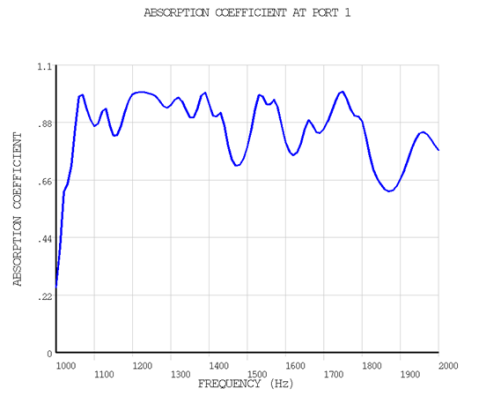The performance of a sound reducer is determined by the amount of sound energy that it absorbs. A perfect resonator would have a constant absorption coefficient of 1 over the frequency range, meaning that all noise entering the system is absorbed.
The absorption coefficient of the system is plotted in postprocessing (PLAS,ALPHA).
To analyze the absorption coefficient, the boundary layer impedance (BLI) and low reduced frequency (LRF) models are compared, as shown in the following figures:
Both models give close results.
The results show that (except for a lower initial absorption at 1000 Hz) this resonator is efficient, as the absorption coefficient is close to 1 over the frequency range.





